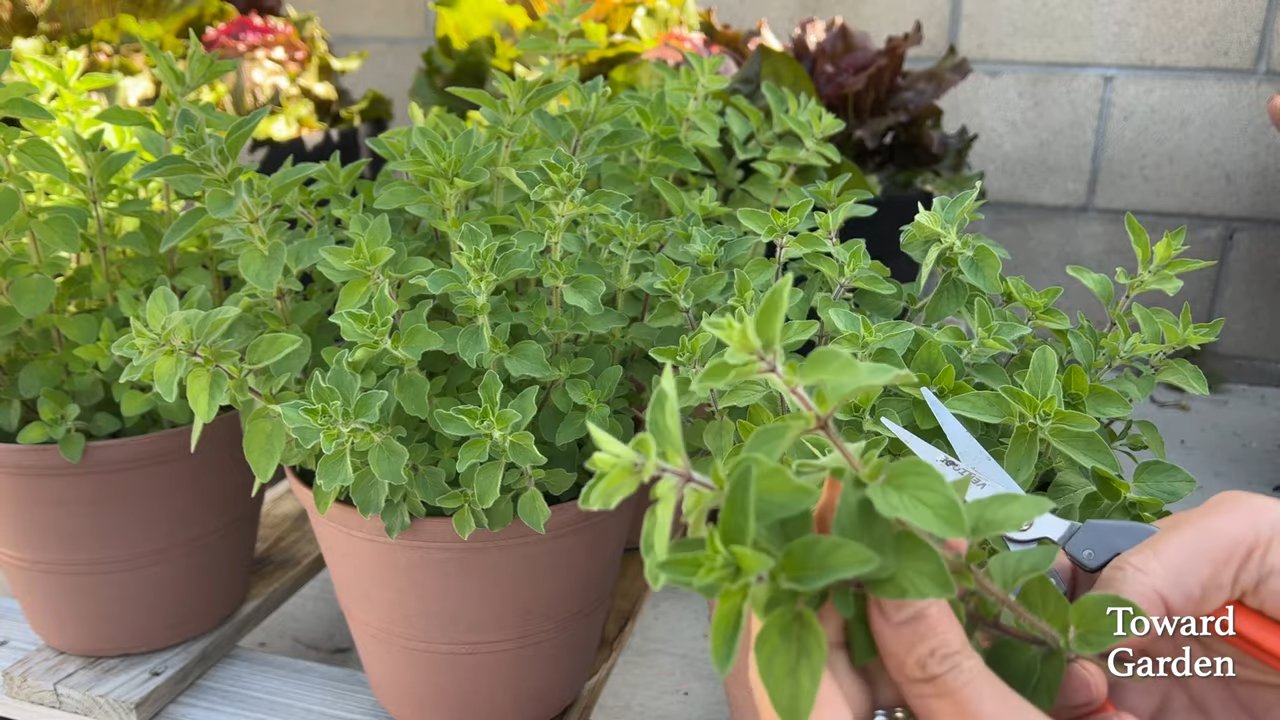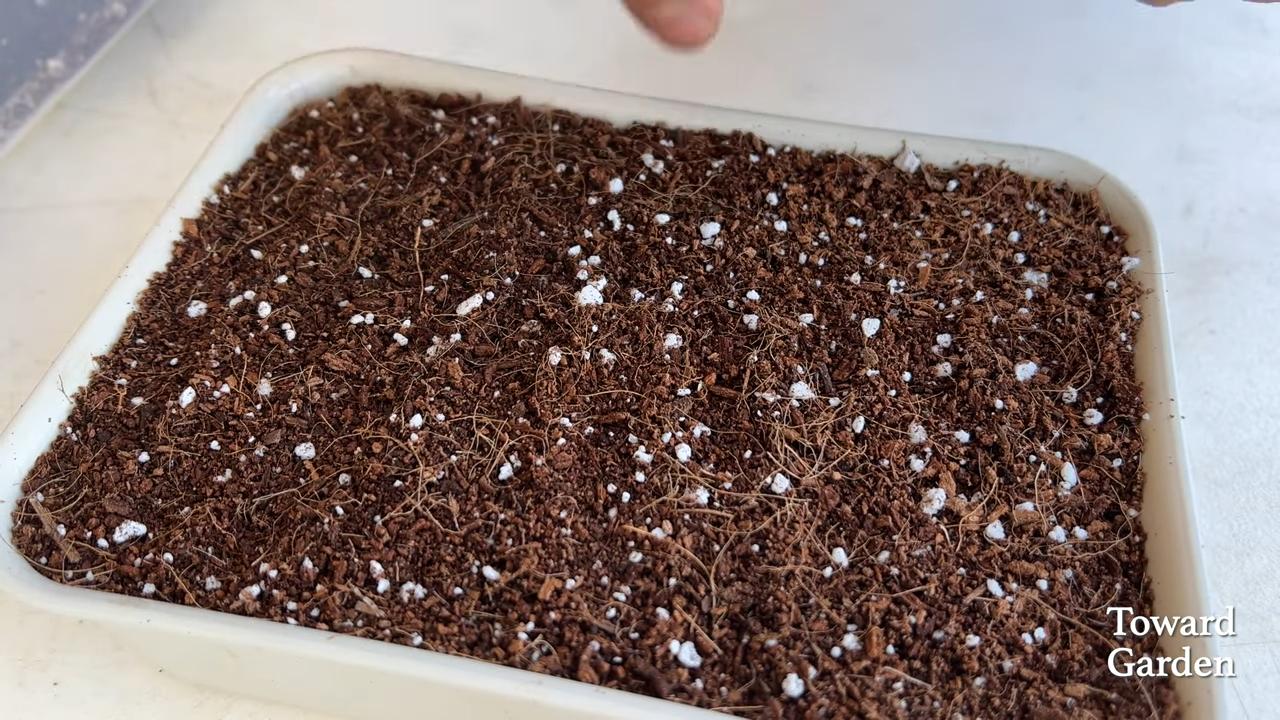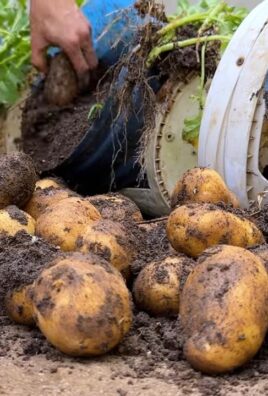Grow Oregano at Home with these simple, yet effective DIY tricks! Have you ever dreamt of snipping fresh, fragrant oregano straight from your garden to sprinkle on your homemade pizza or pasta sauce? I know I have! For centuries, oregano has been more than just a culinary herb; it’s been a symbol of joy, health, and even protection in various cultures. From ancient Greece, where it was believed to ward off evil spirits, to traditional medicine practices where it was used for its antiseptic properties, oregano boasts a rich and fascinating history.
But let’s be honest, sometimes the thought of starting a garden, even a small herb garden, can feel overwhelming. That’s where these easy DIY hacks come in! I’m going to show you how to grow oregano at home, even if you have limited space or a less-than-green thumb. Imagine the satisfaction of knowing exactly where your herbs come from, free from pesticides and bursting with flavor. Plus, growing your own oregano is a fantastic way to save money and reduce your environmental impact. So, grab your gardening gloves, and let’s get started on this exciting journey to fresh, homegrown oregano!

Growing Oregano at Home: Your Comprehensive DIY Guide
Hello fellow gardeners! I love fresh herbs, and oregano is one of my absolute favorites. It’s so versatile in the kitchen and surprisingly easy to grow at home. In this article, I’ll show you step-by-step how you can successfully grow oregano in your own garden or even on your balcony. Let’s get started!
What You Need: A Materials List
Before we get started, make sure you have everything on hand. Here is a list of the things you’ll need for growing oregano:
- Oregano seeds or oregano cuttings: You can either start with seeds or take a cutting from an existing oregano plant. I personally find cuttings easier, but both work well.
- Seed-starting mix or high-quality potting soil: Do not use garden soil, as it is often too heavy and hinders the germination of seeds or the rooting of cuttings.
- Starter pots or a seed tray: Small pots or a tray with multiple cells are ideal for starting.
- A larger pot (optional): If you want to grow your oregano in a pot, you will need one with a diameter of at least 20 cm (8 inches).
- Garden shears or a knife: For taking cuttings.
- Watering can or spray bottle: For watering.
- Sunlight: Oregano loves the sun!
- Drainage gravel or expanded clay pebbles: To prevent waterlogging in the pot.
- Labels and a pen: To label your plants (especially helpful if you are growing different herbs).
Growing Oregano from Seed: Step by Step
If you’ve decided to grow from seed, follow these steps:
- Prepare the starter pots: Fill your starter pots with seed-starting mix. Press the soil down lightly, but not too firmly.
- Sow the seeds: Oregano seeds are very small. Sprinkle them carefully onto the surface of the soil. You don’t need to bury them deep. A light layer of soil over them is sufficient.
- Water: Moisten the soil with a spray bottle. Avoid watering too heavily, as the seeds could be washed away.
- Cover (optional): You can cover the starter pots with clear plastic wrap or a lid to increase humidity. Be sure to ventilate regularly to prevent mold.
- Location: Place the starter pots in a warm and bright location. Direct sunlight is not necessary during this phase.
- Germination: Germination usually takes 10-14 days. Keep the soil moist, but not wet, during this time.
- Pricking out (optional): When the seedlings are large enough (about 5-7 cm / 2-3 inches high), you can prick them out into larger pots. This means you carefully take each seedling out of the starter pot and plant it in its own pot.
- Hardening off: Before you plant your oregano plants outdoors, you should harden them off. This means you gradually acclimate them to outdoor conditions. Start by placing them outside for a few hours a day and increase the time each day.
Growing Oregano from Cuttings: A Simple Method
I find that growing oregano from cuttings is one of the easiest ways to get a new plant quickly. Here’s how:
- Select the cutting: Choose a healthy oregano plant and cut a shoot about 10-15 cm (4-6 inches) long. Use clean garden shears or a knife.
- Prepare the cutting: Remove the lower leaves from the cutting so that about 5-7 cm (2-3 inches) of the stem is bare.
- Rooting: There are different ways to root the cutting:
- In water: Place the cutting in a glass of water. Make sure the lower leaves are not in the water, as they could rot. Change the water every few days. After a few weeks, roots should form.
- In soil: Stick the cutting directly into seed-starting mix. Keep the soil moist, but not wet. You can also cover the cutting with a plastic bag to increase humidity.
- Planting: Once the cutting has formed roots (either in water or in soil), you can plant it in a pot or outdoors.
The Right Location for Your Oregano
Oregano is a sun-lover! It needs at least 6 hours of sunlight per day to grow optimally. Choose a location that is sunny and well-ventilated. If you are growing your oregano in a pot, you can easily move it to a sunnier spot if necessary.
The Right Soil for Oregano
Oregano prefers well-draining soil. Waterlogging can lead to root rot. If you are growing your oregano in a pot, use a high-quality potting soil or a mixture of potting soil and sand. In the garden, the soil should be loose and rich in humus. You can improve the soil with compost or other organic material.
Watering: Not Too Much, Not Too Little
Oregano is relatively drought-tolerant, but it still needs regular watering. Water it when the top layer of soil feels dry. Avoid wetting the leaves, as this can promote fungal diseases. It is best to water in the morning so the leaves can dry during the day.
Fertilizing: Less is More
Oregano does not need much fertilizer. A light feeding in the spring with an organic fertilizer is sufficient. Avoid over-fertilizing, as this can lead to excessive leaf growth, which can affect the flavor.
Harvesting: Harvest Regularly for Bushy Growth
You can harvest oregano as soon as the plant is large enough. Cut the shoots with scissors. Regular harvesting encourages bushy growth. It is best to harvest in the morning when the essential oils are most concentrated. You can use oregano fresh or dry it to make it last longer.
Overwintering: How to Get Your Oregano Through the Winter
Oregano is hardy, but in cold regions, it can benefit from some protection. If you are growing your oregano in a pot, you can move it to a sheltered location in the winter, such as a shed or a garage. If you are growing your oregano in the garden, you can cover it with a layer of mulch to protect the roots from frost.
Pests and Diseases: What You Should Look Out For
Oregano is relatively resistant to pests and diseases. Occasionally, aphids or spider mites may appear. You can combat these with a natural insecticide. Ensure good ventilation to prevent fungal diseases.
Drying Oregano: How to Preserve the Flavor
If you have more oregano than you can use fresh, you can dry it. There are several ways to dry oregano:
Drying in the oven: Place the oregano leaves on a baking sheet and dry them at a low temperature (approx. 50°C / 120°F) in the oven.
Air-drying: Tie the oregano shoots into small bundles and hang them in a dry, dark, and well-ventilated place.

Conclusion
So, there you have it! Cultivating your own oregano at home isn’t just a fun project; it’s a gateway to fresher, more flavorful meals and a deeper connection with the food you prepare. Forget those dried-up, flavorless flakes from the supermarket – imagine the vibrant aroma and intense taste of freshly harvested oregano enhancing your pasta sauces, pizzas, grilled meats, and countless other dishes. This simple DIY trick empowers you to control the quality and source of your herbs, ensuring you’re using the best possible ingredients in your cooking.
But the benefits extend beyond just taste. Growing your own oregano is incredibly cost-effective. A single packet of seeds or a small starter plant can yield a continuous supply of oregano for months, even years, saving you money on repeated grocery store purchases. Plus, you’ll be reducing your environmental footprint by minimizing packaging waste and transportation emissions associated with commercially grown herbs.
Why is this a must-try? Because it’s easy, affordable, rewarding, and delicious! It’s a small step towards a more sustainable and flavorful lifestyle.
Don’t be afraid to experiment with different varieties of oregano. Greek oregano is known for its strong, pungent flavor, while Italian oregano offers a milder, sweeter taste. Mexican oregano, though technically a different plant, provides a citrusy, anise-like flavor that’s perfect for Southwestern cuisine. Try growing a few different types to discover your personal favorite.
Consider planting your oregano in decorative pots to add a touch of greenery to your kitchen windowsill or balcony. You can also incorporate it into a larger herb garden alongside other culinary favorites like basil, thyme, and rosemary. For those with limited space, vertical gardening solutions are an excellent way to maximize your growing area.
And remember, oregano isn’t just for cooking! It also boasts a range of medicinal properties. Oregano oil is a powerful natural antiseptic and can be used to treat various ailments. Fresh oregano leaves can be steeped in hot water to make a soothing tea that can help relieve coughs and congestion.
We’re confident that once you experience the joy of harvesting your own fresh oregano, you’ll never go back to store-bought dried herbs again. It’s a simple pleasure that adds so much to your culinary experience.
So, what are you waiting for? Grab some seeds or a starter plant, find a sunny spot, and get growing! We encourage you to try this DIY trick and share your experiences with us. Tell us about your favorite oregano varieties, your creative planting ideas, and your delicious oregano-infused recipes. Share your photos and stories on social media using #HomegrownOregano and let’s inspire others to discover the joys of growing their own herbs. We can’t wait to see what you create!
Frequently Asked Questions (FAQ)
What is the best time of year to plant oregano?
The best time to plant oregano depends on your climate. In regions with mild winters, you can plant oregano in the early spring or fall. In colder climates, it’s best to wait until after the last frost in the spring. Starting oregano indoors from seeds 6-8 weeks before the last frost is also a great option for colder regions, giving your plants a head start. This ensures they are strong enough to thrive once transplanted outdoors.
How much sunlight does oregano need?
Oregano thrives in full sun, requiring at least 6-8 hours of direct sunlight per day. If you’re growing oregano indoors, place it near a sunny window or use a grow light to supplement natural light. Insufficient sunlight can lead to leggy growth and reduced flavor intensity.
What kind of soil is best for growing oregano?
Oregano prefers well-draining soil with a slightly alkaline pH (around 6.5-7.0). Amend heavy clay soil with compost or other organic matter to improve drainage. You can also grow oregano successfully in containers using a high-quality potting mix. Avoid soils that retain too much moisture, as this can lead to root rot.
How often should I water my oregano plant?
Oregano is relatively drought-tolerant and doesn’t require frequent watering. Water thoroughly when the top inch of soil feels dry to the touch. Avoid overwatering, as this can lead to root rot. During hot, dry weather, you may need to water more frequently. Ensure your pot has good drainage to prevent waterlogging.
How do I harvest oregano?
You can start harvesting oregano leaves once the plant is about 4-6 inches tall. Simply snip off the stems just above a leaf node. Regular harvesting encourages bushier growth. The flavor of oregano is most intense just before the plant flowers. You can also dry oregano leaves for later use by hanging them upside down in a cool, dry place or using a dehydrator.
How do I propagate oregano?
Oregano can be easily propagated from stem cuttings. Take a 4-6 inch cutting from a healthy stem, remove the lower leaves, and place the cutting in water or directly into moist potting mix. Roots should develop within a few weeks. You can also propagate oregano by dividing established plants in the spring or fall.
Does oregano need fertilizer?
Oregano is not a heavy feeder and doesn’t require frequent fertilization. However, you can apply a balanced organic fertilizer in the spring to promote healthy growth. Avoid over-fertilizing, as this can reduce the flavor intensity of the leaves. A side dressing of compost is often sufficient.
How do I overwinter oregano?
In colder climates, oregano may need protection during the winter. If you’re growing oregano in containers, you can bring them indoors and place them in a sunny location. Alternatively, you can mulch around the base of the plant to protect the roots from freezing temperatures. In milder climates, oregano may remain evergreen throughout the winter.
What are some common pests and diseases that affect oregano?
Oregano is generally resistant to pests and diseases. However, aphids, spider mites, and root rot can sometimes be a problem. Inspect your plants regularly for signs of infestation or disease and take appropriate action. Use organic pest control methods such as insecticidal soap or neem oil to control pests. Ensure good drainage to prevent root rot.
Can I grow oregano indoors?
Yes, oregano can be successfully grown indoors, provided it receives enough sunlight or artificial light. Place the plant near a sunny window or use a grow light to supplement natural light. Use a well-draining potting mix and water regularly, allowing the soil to dry out slightly between waterings.
What are some creative ways to use fresh oregano?
Beyond the usual Italian dishes, fresh oregano can be used in a variety of creative ways. Add it to marinades for grilled meats and vegetables, sprinkle it on salads, or use it to flavor homemade vinaigrettes. Oregano also pairs well with eggs, beans, and cheeses. Experiment with different combinations to discover your favorite uses. You can even infuse olive oil with oregano for a flavorful finishing oil.
Is oregano a perennial or annual?
Oregano is a perennial herb, meaning it will come back year after year. In colder climates, it may die back to the ground in the winter, but it will regrow in the spring. With proper care, your oregano plant can provide you with fresh herbs for many years to come.
How can I make oregano oil at home?
While making pure oregano oil requires specialized equipment, you can create an infused oregano oil at home. Simply combine fresh oregano leaves with a high-quality olive oil in a jar. Seal the jar tightly and let it sit in a cool, dark place for several weeks, shaking it occasionally. Strain the oil through a cheesecloth to remove the leaves. This infused oil will have a milder flavor than pure oregano oil but can still be used for cooking and other purposes.





Leave a Comment